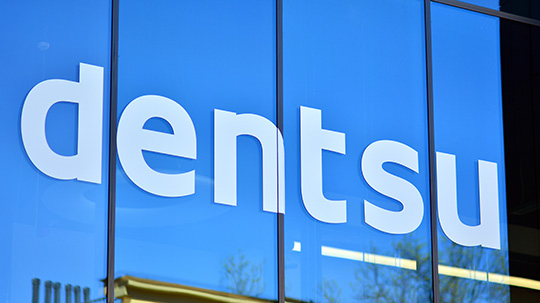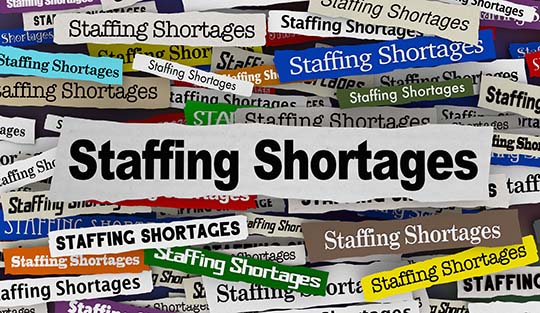The holding companies have come roaring back from the pandemic, reporting strong year over year organic growth. WPP just reported +12% year over year organic growth for 2021. Publicis, Omnicom, Interpublic and Dentsu each reported year over year organic growth exceeding +10%. In a big industry, that is a great deal of added revenue!

All of this happened at the same time as continued advances by the Consultants, Martin Sorrell’s S4 and David Jones’ The Brandtech Group. And many small agencies had terrific years.
What is going on and what does this mean if you’re a CMO? Here are some key themes that are impacting the US agency landscape that CMOs need to be aware of as they lead their agency rosters.
Overall, despite the organic agency growth and strong economy, a number of factors are conspiring to make 2022 a demanding year for both clients and agencies:
- Technology advances and complexity are both driving the need for greater agency scale and providing the opening for non-traditional competition for what historically was agency work.
- Agencies are struggling to be fully staffed and cost of service is accelerating rapidly.
- The annual agency review frenzy will continue and has important implications for clients.
Let’s unpack each of these themes.
Technology advances and complexity are both driving the need for greater agency scale and providing the opening for non-traditional competition for what historically was agency work.
Keeping up with the LUMAscape is a daily challenge for the modern agency. Agencies today need to continuously invest in their data, martech and adtech stacks every year or they will fall behind. DMP, CDP, CRM, CMS, DAM, DSP and other technologies must be understood and often mastered.

Clients appropriately look to the agencies to understand, explain and have a plan for the latest industry challenges and changes, whether it’s cookie deprecation, the rise of decentralized finance or meta.
The Holdcos continue to acquire more agencies and capabilities and merge agency “pieces” to create greater scale. At the Holdco level, Stagwell ate MDC. Agency mergers were common with Vizeum merged into iProspect, 360i merged into DentsuX and Assembly merging with ForwardPMX. And these are just a sampling of the major recent mergers and acquisitions.
Concurrent to all of this Holdco activity there has also been a rise of disruptor firms, jumping in to fill poorly addressed niches or new capabilities that marketers needed. David Jones’ The Brandtech Group has come of age, enjoying explosive growth as a leader in helping clients deal with their marketing technology needs. They of course aren’t alone as agile, smart consulting firms like Transparent Partners have also grown rapidly, helping clients with some of the thorniest technology and media needs.
What does all of this mean to CMOs? If a CMO or senior marketer has not done the following recently, there is no time to waste:
- Review your agency roster to eliminate duplication and build efficiencies
- Update your marketing and agency briefing and workflows to add agility and enhance collaboration
- Review your current data capabilities and marketing tech stack vis-à-vis your consumer centric transformation plans towards capabilities like personalization and build a modern, flexible roadmap forward
None of this can wait.
Agencies are struggling to be fully staffed, and cost of service is accelerating.
It is incredibly hard to staff an agency today. Modern agencies have some of the same kinds of jobs they always had (different types of creatives, or media execs, account service, etc.). But they also need data scientists, analytics folks, several different kinds of strategists (business, account, digital), technology experts, programmatic experts, project managers and many other new age jobs that are needed to run the complex undertaking of helping a client be consumer or customer centric in 2022.
That all sounds…. complicated. But it gets worse from there, as those same roles (and same people) are in great demand from a wide range of other employers. The list of firms competing to hire the same talent as a modern agency is breathtaking:
- Big tech firms like Google, Facebook, Amazon, Twitter, Snapchat and Microsoft
- The large “classic” Consultants like Deloitte, Accenture, Bain and McKinsey
- Specialty consultants like the Brandtech Group and MediaLink
- DTC brands like Stitch Fix, MVMT, Tracksmith and others
- Data/tech driven firms like Airbnb, Uber, Zillow Group, Expedia and Tripadvisor
- FinTech firms like SoFi, Chime, Dave, Vero
- Inhouse Agencies across industry in categories as varied as CPG to hardcore B2B
There are a limited number of people available to fill all of these roles. Demand far exceeds supply. And that means an agency’s staffing price tag is accelerating rapidly. At Mercer Island Group we have seen rates for some agency roles advance by more than 30% over the past 24 months and there is no end in sight.

We’ve previously advised CMOs to ask their agencies how they are addressing this staffing challenge in recruiting, training and rates. These are critical conversations. CMOs need to bring their best game face and their wallets to this discussion.
CMOs can also get ahead of the impact of this aggressive staffing cost inflation by ensuring their marketing organization is smart, agile and has optimized key client/agency workflow processes to make sure the client team is not adding to inflation via poor management practices. CMOs need to make sure:
- SOWs focus on the most critical priorities and avoid duplication
- Briefing processes are effective and timely
- Expectations are clear and reasonable
- Marketers are trained in effective evaluation and feedback delivery skills
- Creative and media plan approval processes are effective and efficient
The annual agency review frenzy will continue and has important implications for clients and agencies.
This past year was a huge year for reviews. And the review space was busy everywhere: creative, media, PR, digital, performance marketing, etc. T-Mobile, Mars, Cocoa Cola, L’Oreal, Home Depot, Dunkin’, Tinder, KFC, Facebook, McDonalds and many other major advertisers conducted creative, media or full roster reviews. Most major health insurance brands got into the act too – Cigna, Anthem, Kaiser Permanente, Aetna and others. Major financial services brands were also active like JP Morgan Chase and Ally.
The review business continues to be strong in 2022. Burger King, Kohl’s, HBO Max and many others have already announced reviews. We’re having another record year.
If you are a CMO or senior marketer and you need an agency, what do you do in this environment?
- Be a great client. It makes you a desirable partner and that is incredibly important to hiring the best agencies and enjoying the best talent on your business these days.
- Learn “agency math” and what that math suggests is the right sized agency for your business. What will your fee investment translate to in FTE support? What percentage of the agency’s business will that represent? Are you comfortable being either a whale or a minnow? If you aren’t familiar with “agency math”, ask us. We’ll be happy to help you understand what the implications of your fee investment will be on agency attention.
- Look to the “Best Places to Work” ratings as much as you do the awards and other lists like AdAge’s A List. Agencies are struggling to hire and keep staff. You want to hire an agency where the staff love working at the agency. They’ll stay at the agency longer and serve your business better.
- Be mindful that whatever you thought you knew about the agency landscape likely has changed. There has been a huge amount of senior executive change at major agencies like W&K, FCB, Dentsu, Droga, McCann, R/GA, Publicis and dozens of other agencies. Changes in the executive suite can have a huge impact on an organization – so update yourself on what is happening before you hire the agency you thought you knew.
- Call us. We’re happy to discuss any of the above if you need!
Steve Boehler, founder, and partner at Mercer Island Group has led consulting teams on behalf of clients as diverse as Ulta Beauty, Microsoft, UScellular, Nintendo, Kaiser Permanente, Holland America Line, Stop & Shop, Qualcomm, Brooks Running, and numerous others. He founded MIG after serving as a division president in a Fortune 100 when he was only 32. Earlier in his career, Steve Boehler cut his teeth with a decade in Brand Management at Procter & Gamble, leading brands like Tide, Pringles, and Jif.